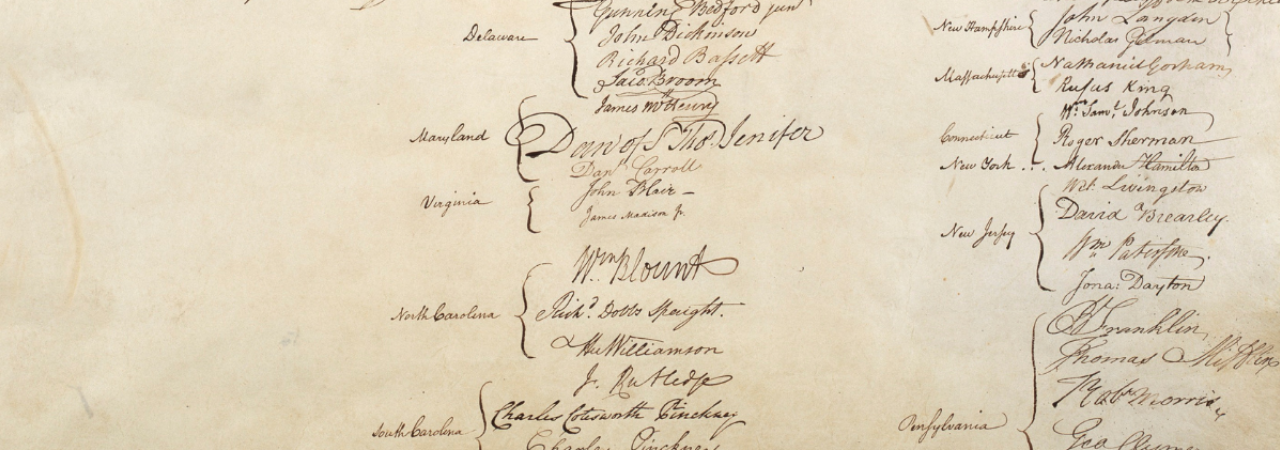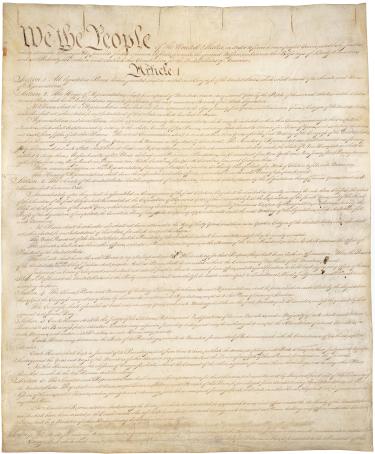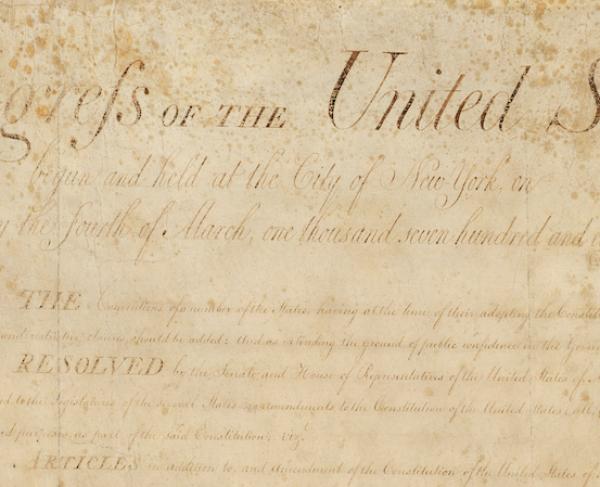
Four years after the United States and Britain signed the Treaty of Paris, the United States was in trouble. In 1781, the budding United States government had created the Articles of Confederation to rule their new nation. These Articles purposefully gave more power to the states than a centralized government to counter the authoritarian nature of the British monarchy. However, because of the weak central government, the United States had trouble negotiating with foreign powers, raising money to support the pensions of Continental Army soldiers, and regulating commerce. Now these shortcomings were coming to a head, and the prominent political leaders of the United States worried that these shortcomings could mean an end to the United States. On May 25, 1787, fifty-five delegates met in the old Pennsylvania State House, now known as Independence Hall, in Philadelphia, Pennsylvania. The purpose of this Convention was to revise the Articles of Confederation and compensate for its shortcomings. However, the Convention ended with the United States Constitution, a new system of government, and this Convention became known as the Constitutional Convention.

Once the Convention decided on drafting a new governmental system, arguments began. The Virginia Plan, proposed by James Madison, included three branches of government: the Legislative Branch, the Executive Branch, and the Judicial Branch. The Legislative Branch was to be comprised of a Senate and a House of Representatives. Representatives of both were determined by the population of each state. William Paterson, a delegate of New Jersey, noted that the Legislative Branch favored states with higher populations, such as Virginia, as opposed to states with lower populations, such as New Jersey. In the New Jersey Plan, Patterson proposed that there was to be only one house in the Legislative Branch and that each state get only one representative. This revision made representation an even playing field against the states. Arguments ensued until the Connecticut Compromise was proposed. This compromise retained the three branches of government from the Virginia Plan. However, the Senate in the Legislative Branch was to be comprised of two representatives per state, and the House of Representatives was to be comprised of representatives proportional to the state’s population.
However, even after the Virginia Plan and the New Jersey Plan were rectified, a new issue emerged: how to count the states’ population. The southern States, with high populations of enslaved African Americans, wanted to count slaves in their population totals, while many Northern States, with lower enslaved populations, thought this plan gave southern States an unfair advantage. In addition, many found it hypocritical to count enslaved persons in the population total when they were considered “property” in other legislation. Some delegates wanted to go even farther and abolish slavery and the slave trade during this Convention. Unable to find a resolution to this problem, the Convention ruled that Congress had the power to ban the international slave trade, but not until 1808, 20 years later. They delayed the issue, hoping that compromise could be found at that time. In addition, they settled on the Three-Fifths Compromise. This compromise stated that enslaved persons counted as 3/5th of a person in representation numbers and tax numbers. States with high enslaved populations got more representation in the House of Representatives but also had to pay more taxes to the central government. This question on slavery and its endurance in American haunted the United States government until war eventually erupted on the issue in 1861.

Other discussions emerged in this Convention, such as: In the Executive Branch, should there be one leader, known as the president, or should there be a group of leaders? If there is one president, how should that president be elected, and how long should their terms in office be? Should there be a way to impeach if the president is not fulfilling their duties and what offense should be impeachable? Which branch should be responsible for electing judges for the Judicial Branch of government? What type of systems was in place to check and balance the three branches of government? Etc.
These questions were circulated and discussed thoroughly for four months. On September 17, 1787, the United States Constitution, which laid out and dictated how the new system of government, was signed by twenty-seven of the fifty delegates of the Constitutional Convention. This document was presented to the states later that month and ratified the next year. In 1791, the Bill of Rights was ratified and joined the Constitution as one of the United States’ founding documents. The Constitutional Convention was the Convention that set the bedrock for the United States Government today. While many issues were not fully resolved, such as the issue of slavery in the United States, the Convention was the grounds on which the new system of government was discussed, argued on, and eventually implicated.


